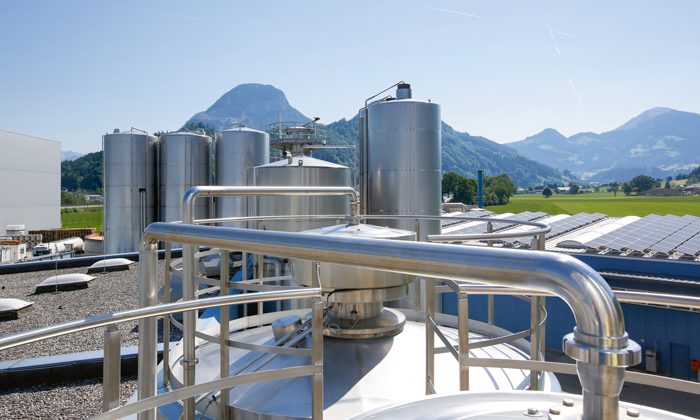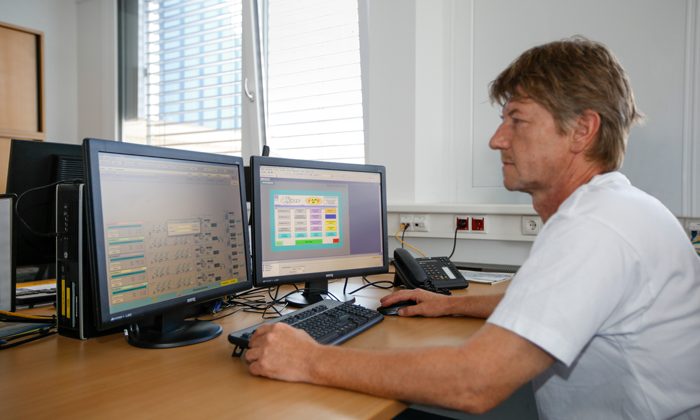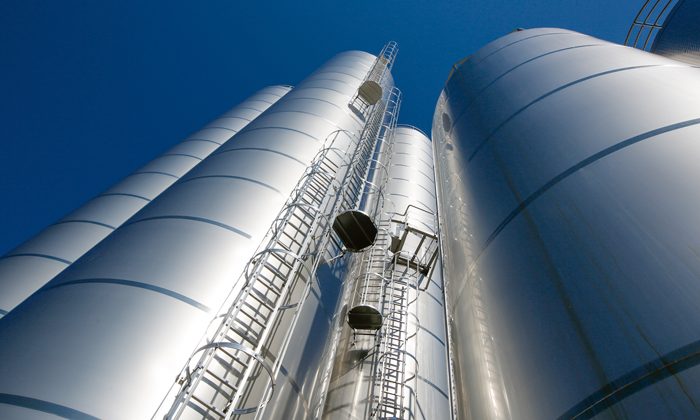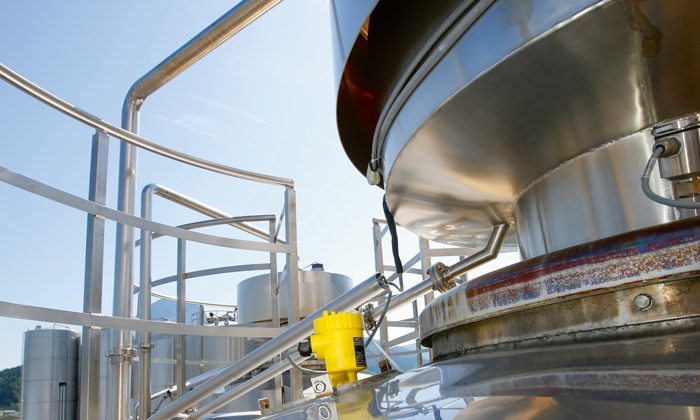A careful handling of resources
- Like
- Digg
- Del
- Tumblr
- VKontakte
- Buffer
- Love This
- Odnoklassniki
- Meneame
- Blogger
- Amazon
- Yahoo Mail
- Gmail
- AOL
- Newsvine
- HackerNews
- Evernote
- MySpace
- Mail.ru
- Viadeo
- Line
- Comments
- Yummly
- SMS
- Viber
- Telegram
- Subscribe
- Skype
- Facebook Messenger
- Kakao
- LiveJournal
- Yammer
- Edgar
- Fintel
- Mix
- Instapaper
- Copy Link
Posted: 12 June 2019 | Sabine Muehlenkamp, VEGA Grieshaber KG | No comments yet
VEGAPULS 64 radar sensor measures the level in whey production


The milk is collected from more than 3000 farms in the surrounding area.
Closeness to nature, protection of the environment and careful handling of natural resources are fundamental operating principles at Tirol Milch. For example, the plant has been a master of energy conservation for many years; every litre of milk can be traced back and every by-product is utilised. This requires disciplined procedures, particularly in the case of maintenance. VEGA sensors help ensure that these operations can now be conducted even faster.
The Tirol Milch plant in Woergl, which belongs to the Berglandmilch Group, is renowned for its cheese far beyond the borders of Tyrol. Yoghurt, butter and chocolate pudding are also produced at the site, but about two thirds of the collected milk volume is actually used in the cheese dairy. It went into operation in May 2014 and is today the second largest cheese production facility in Austria.
Networking material and energy flows
Close cooperation with the farms ensures a special connection to the homeland, which is ultimately also reflected in the technology that is used. To provide the large amounts of energy required to make dairy products – in evaporation, milk cooling or container cleaning – alternative sources of energy, such as photovoltaics and an own wood chip heating system, are also utilised.
In addition, all energy flows are combined so that consumption remains low. The deployment of elaborate process technology has paid off: The plant in Woergl recently received an award as the most environmentally-friendly dairy business in Europe.]
VEGAPULS 64 facilitates maintenance work
VEGA has been working together with the company for a long time – 10 to 12 VEGA radar level transmitters are currently in use. Martin Schneider, master electrician at Berglandmilch says he would have liked to have more, using the whey tanks as an example.


Martin Schneider, master electrician at Berglandmilch, has his eye on all material and energy streams.
In the past, many tanks were equipped with level measuring systems, but these were usually delivered within the framework of a complete contract. In practice, this did not always prove to be particularly successful as the equipment suppliers were not level measurement specialists. A differential pressure system with sensors near the tank bottom was often supplied as standard equipment.
From a maintenance point of view this was very labour-intensive, as Schneider reports: “During the cleaning of the whey tanks, for example, mechanical damage to the diaphragm in the pressure transducers would occur again and again when a wrench fell into the tank.”
Another situation: The tanks are meticulously inspected at regular intervals. To do this, the milk technician has to climb into the tanks to inspect them from the inside. Again, there was a risk that the pressure transducers attached to the base could be damaged during each inspection.
Hopes fulfilled
The three whey tanks were only put into operation in 2014. The situation became all the more unsatisfactory for Martin Schneider: Apart from the mechanical problems, the existing level measuring system also created difficulties in other respects.
Whey is not easy to measure using this kind of level measurement. “The protein foam caused problems repeatedly, the tank also has welds and an agitator. The spray balls interfere with the measurement too,” explains Schneider.


The three whey tanks were put into operation in 2014.
There was a further challenge: At the end of the tanks there is a centrifuge with an output of 50,000 litres per hour. The problem is that the tanks have a flat bottom, which makes an exact zero measurement impossible with the pressure transmitter mounted a few centimetres above the bottom.
As a result, air was repeatedly sucked into the centrifuge. Alpina, a company that processes the whey at the Tirol site in Woergl, was particularly affected by this. The whey is delivered to it via pipeline. These circumstances caused the fat content of the whey to change, which led to problems with Alpina’s filter systems.
Meanwhile, the electrical engineering team had already heard that VEGAPULS 64, a new radar level transmitter, was under development. Schneider had high hopes that its high measuring frequency of 80GHz would result in better focusing and higher resolution of the measuring signal.
As soon as the first ones became available in 2016, all whey tanks were outfitted with the VEGAPULS 64 radar sensor.


VEGAPULS 64 measures the level reliably in the whey tanks.









